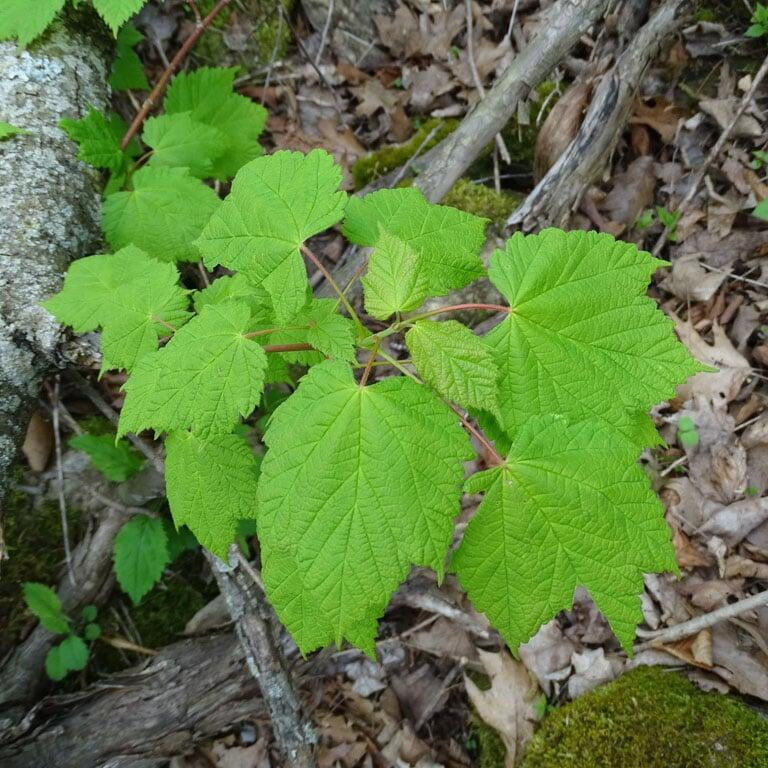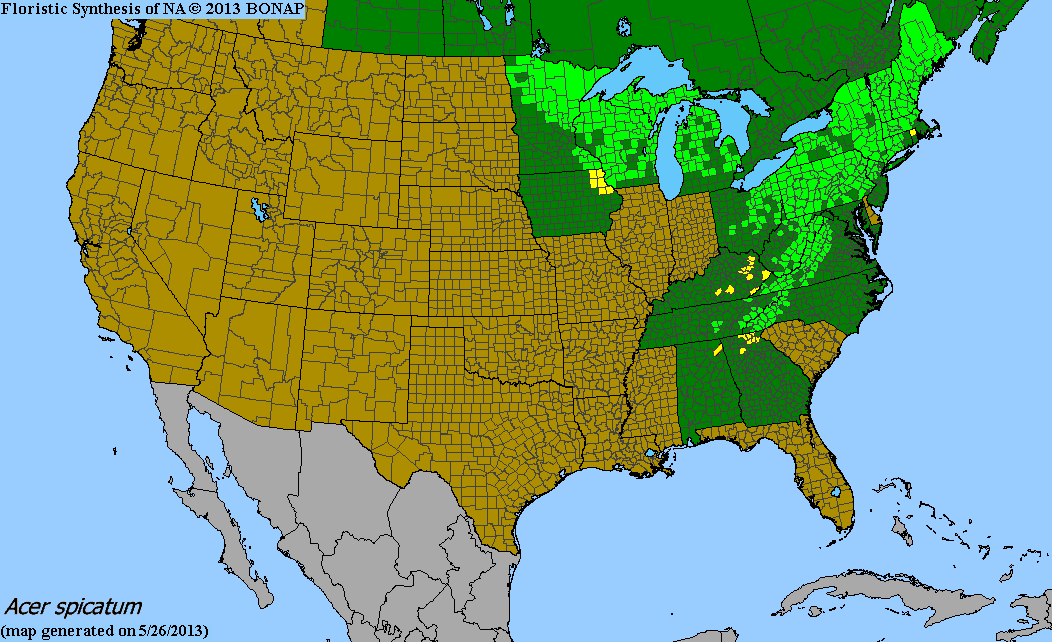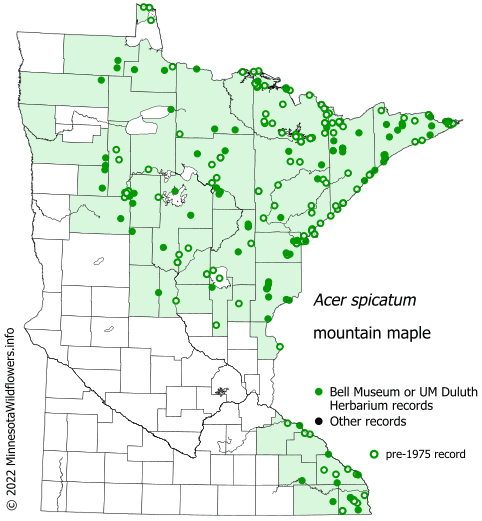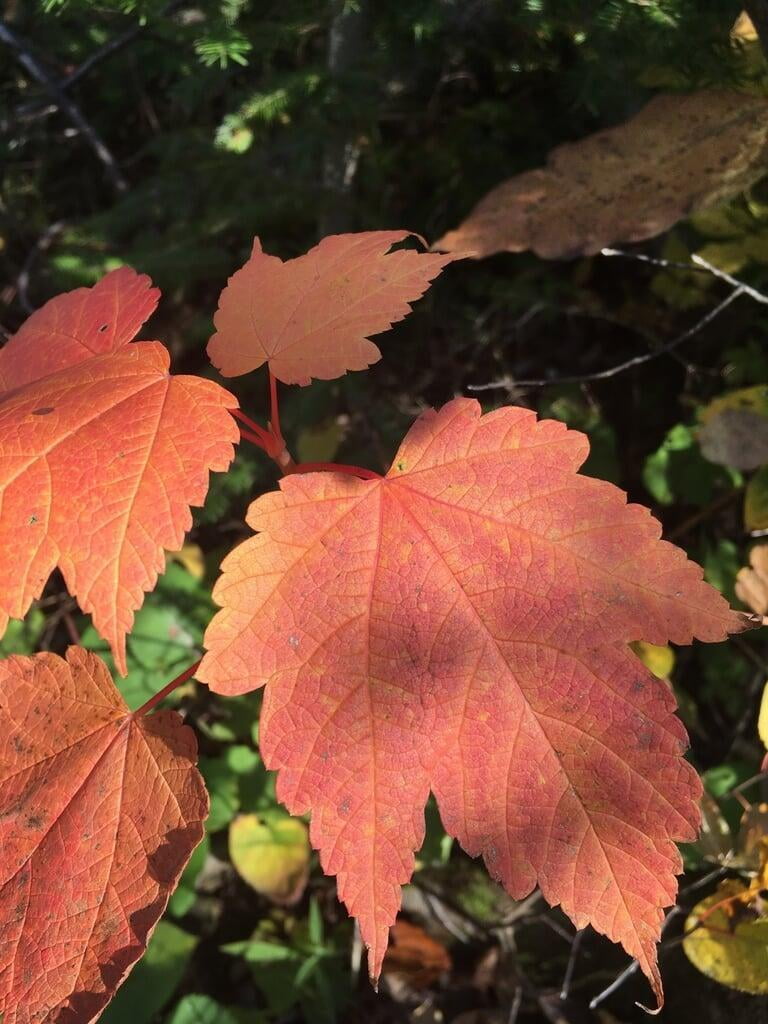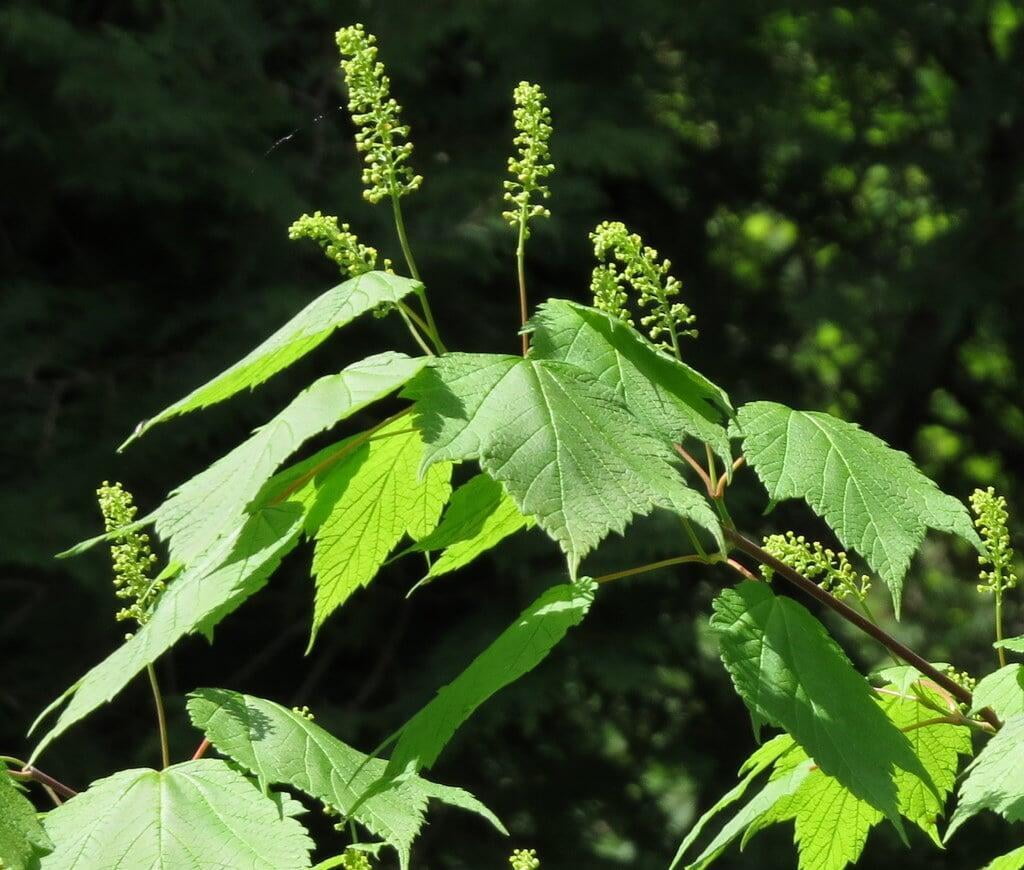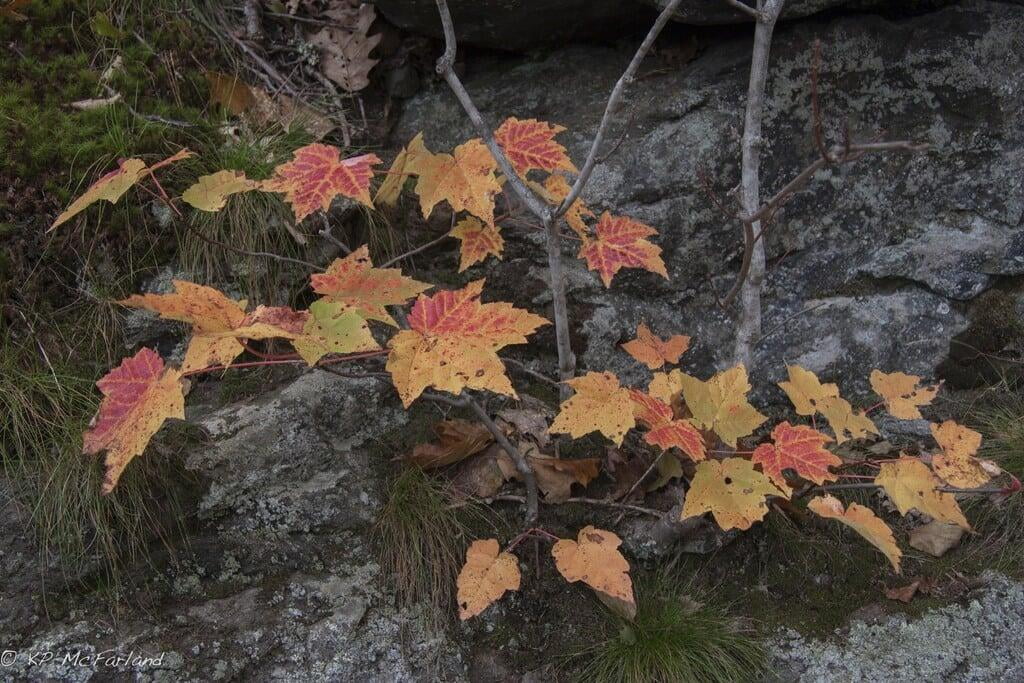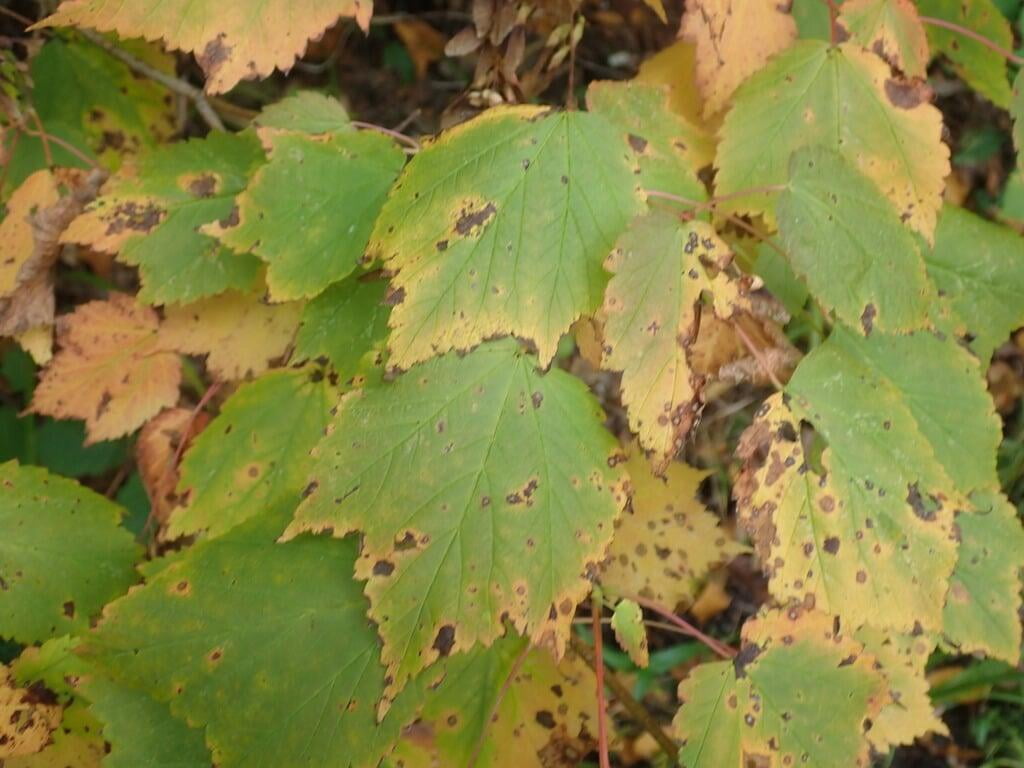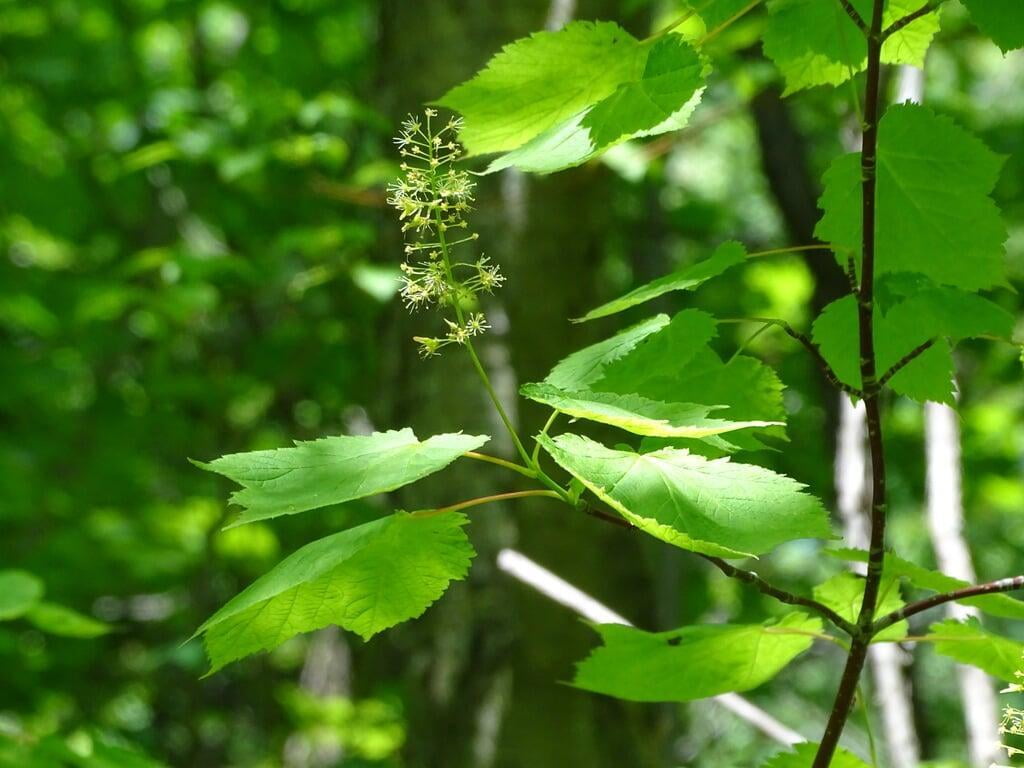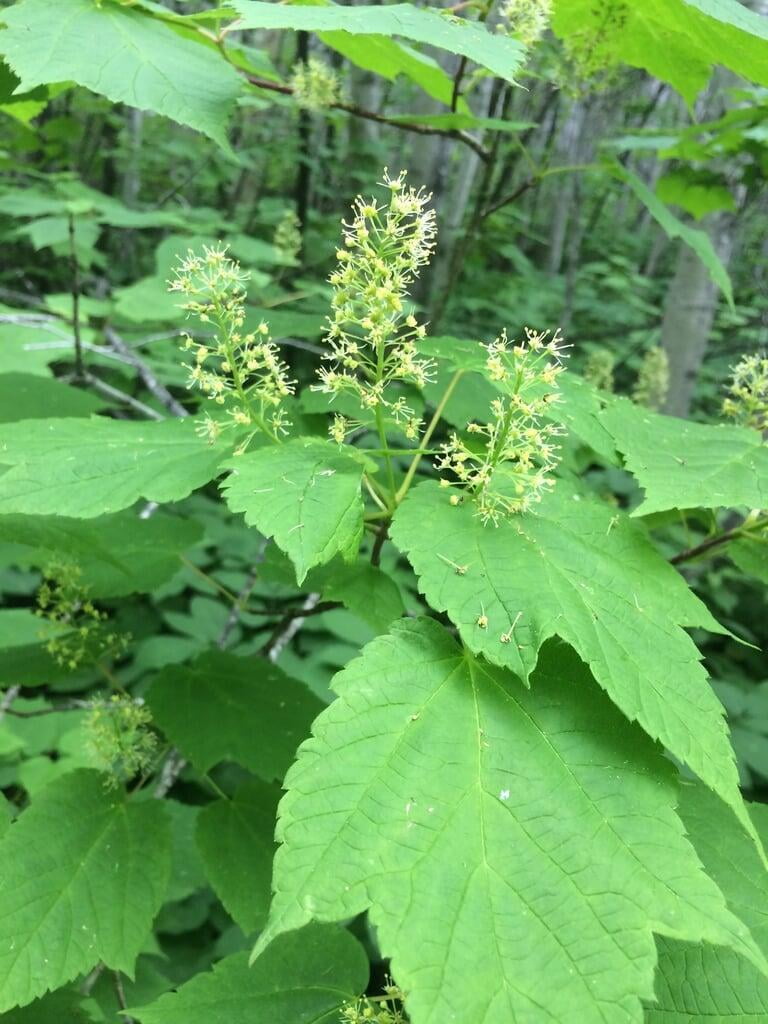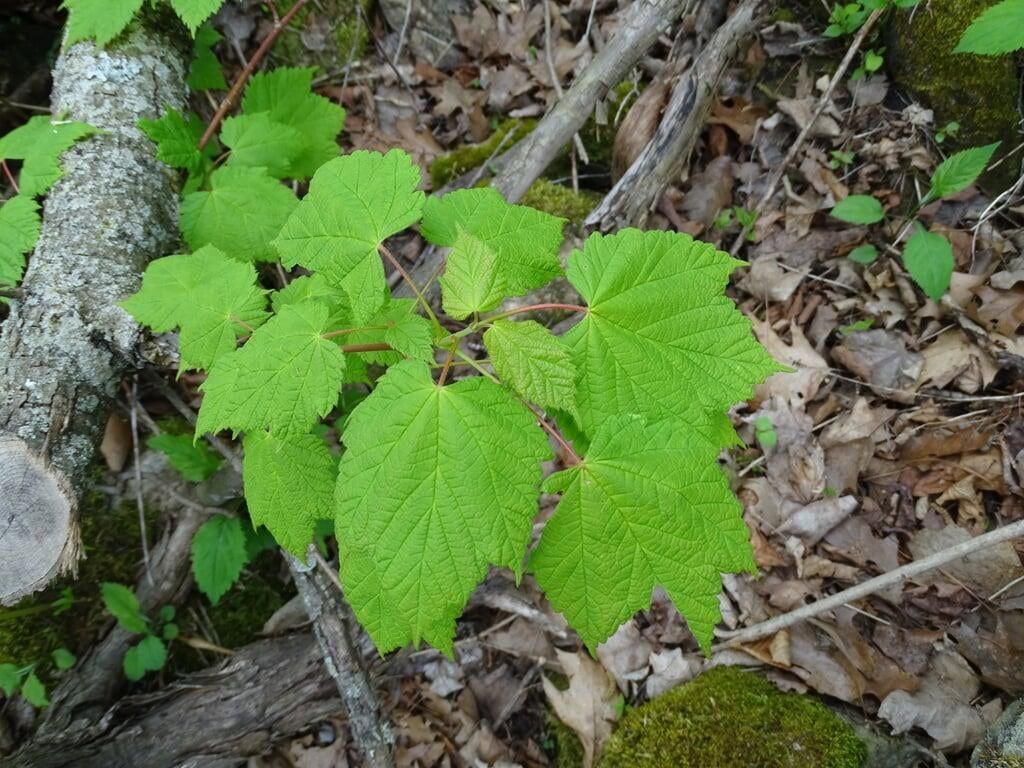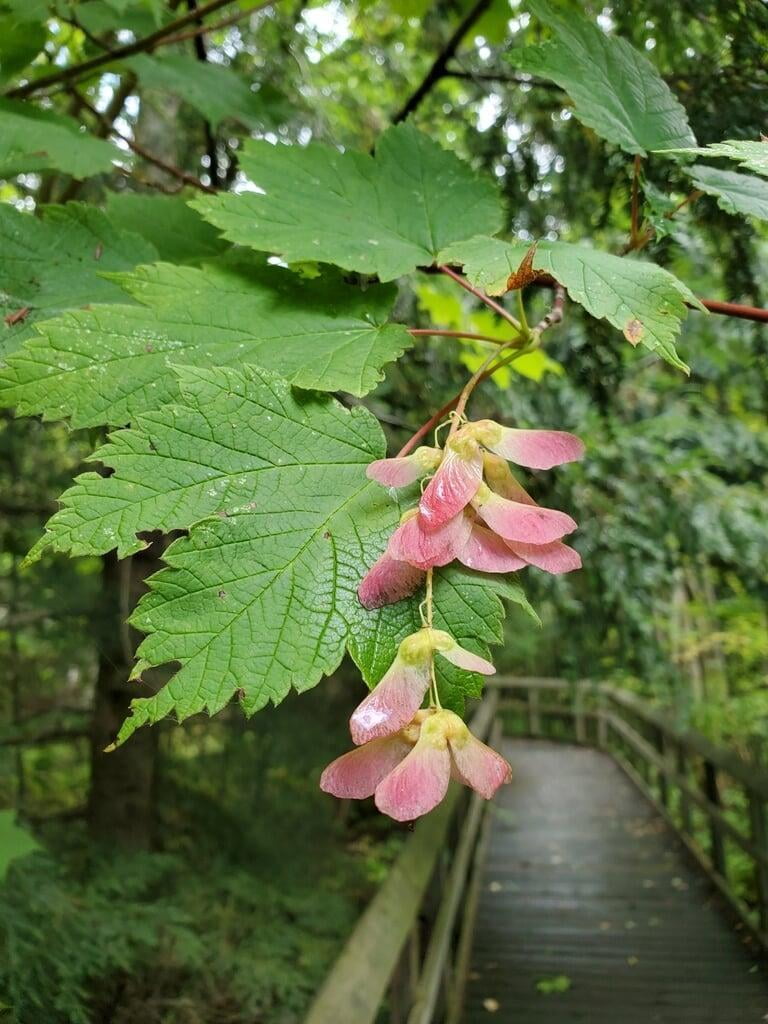Acer spicatum
Mountain maple description:
Acer spicatum, also known as mountain maple, is a small to medium-sized deciduous tree that is native to the northeastern United States and southeastern Canada. It typically grows to a height of 10-25 feet, with a trunk diameter of 4 to 12 inches.
The leaves of Acer spicatum are simple, opposite, and palmately lobed with three to five lobes. They are typically 5 to 10 cm (2 to 4 inches) long, with serrated edges. The leaves turn a bright yellow, orange, or red in the fall, making it a popular ornamental tree.
In the spring, Acer spicatum produces clusters of small, greenish-yellow flowers that give way to paired samaras, each containing a single seed. These "helicopter" seeds are typical of the maple family and are dispersed by the wind.
Acer spicatum is an important tree for wildlife, providing food and shelter for birds, mammals, and insects. It is also used for erosion control and land reclamation in disturbed areas. In addition, its wood is valued for its strength and durability and is used for a variety of purposes, including furniture, flooring, and tool handles.
Native Range:
Acer spicatum's native range in the USA includes the states of Maine, New Hampshire, Vermont, Massachusetts, Connecticut, New York, Pennsylvania, New Jersey, Maryland, West Virginia, Virginia, Ohio, Michigan, Wisconsin, and Minnesota. It is also found in parts of southeastern Canada, including Ontario, Quebec, and New Brunswick.
Standard Plant Information:
Plant Height: 10-25'
Bloom time: June - July
Preferred Habitat: Does well in part shade to full sun with moist soil. Oftern found in forests, thickets, and conifer swamps.
Planting:
Planting a tree seedling or small potted tree properly is important to ensure its healthy growth and development. Here are the steps you can follow to plant a tree:
Choose the right spot: Select a spot with adequate sunlight, water, and soil drainage. Make sure the tree has enough space to grow to its full size without interfering with other plants, structures, or utility lines.
Prepare the soil: Dig a hole that is twice as wide and slightly shallower than the root ball of the seedling. Remove weeds or debris from the area. Loosen the soil around the edges of the hole to help the roots grow more easily.
Plant the seedling: Place the seedling in the hole, making sure the top of the root ball is level with the ground surface. Gently spread out the roots and fill in the hole with soil, tamping it down lightly as you go.
Water the seedling: Water the tree deeply and thoroughly after planting, making sure the soil is evenly moist. This will help settle the soil around the roots and eliminate any air pockets.
Monitor the growth: Keep an eye on the seedling to make sure it is getting enough water and sunlight, and that it is not being attacked by pests or diseases. Prune any damaged or dead branches as necessary, and provide support if needed.
By following these steps, you can help ensure the healthy growth and development of your newly planted tree seedling.

